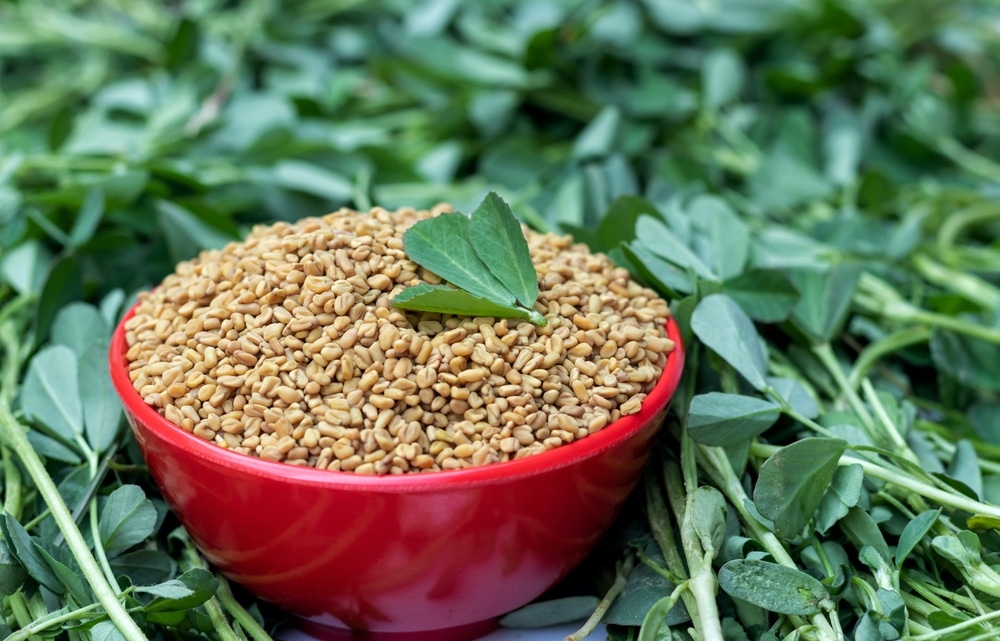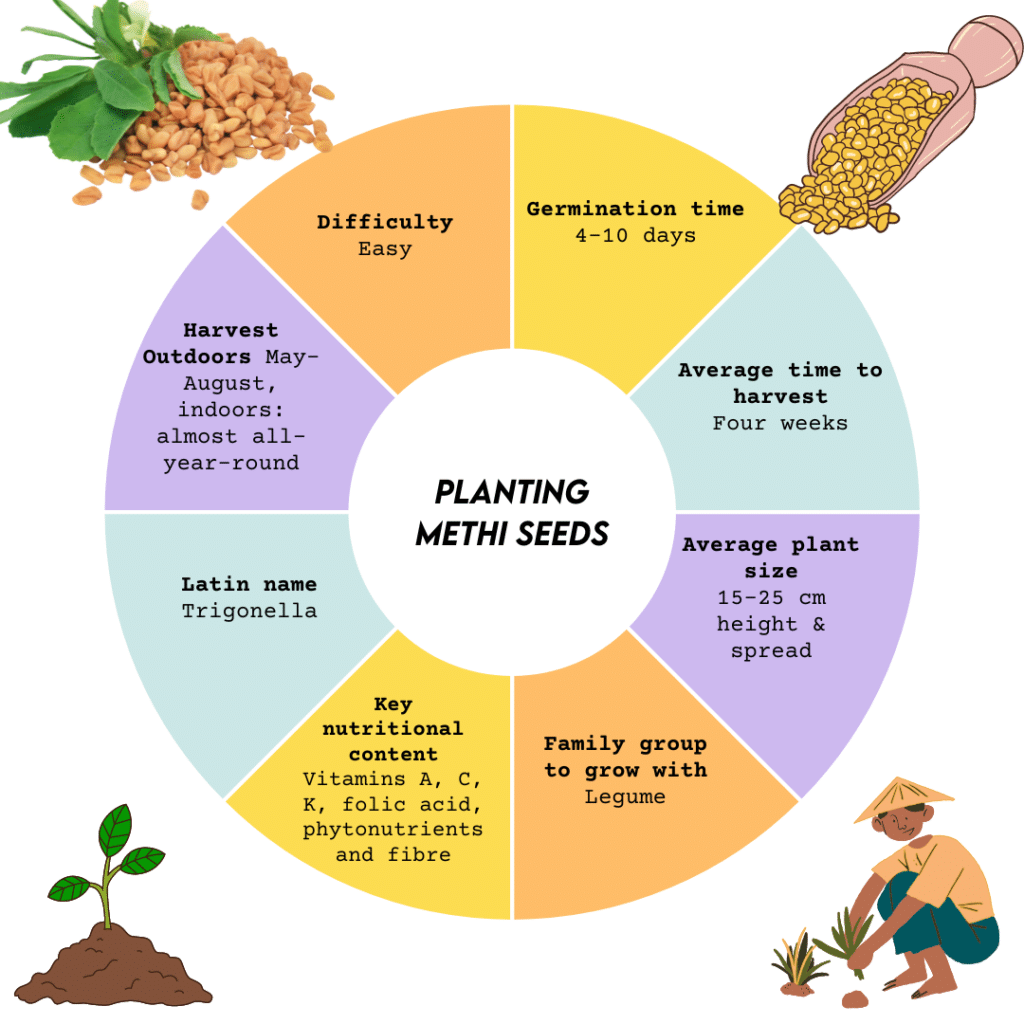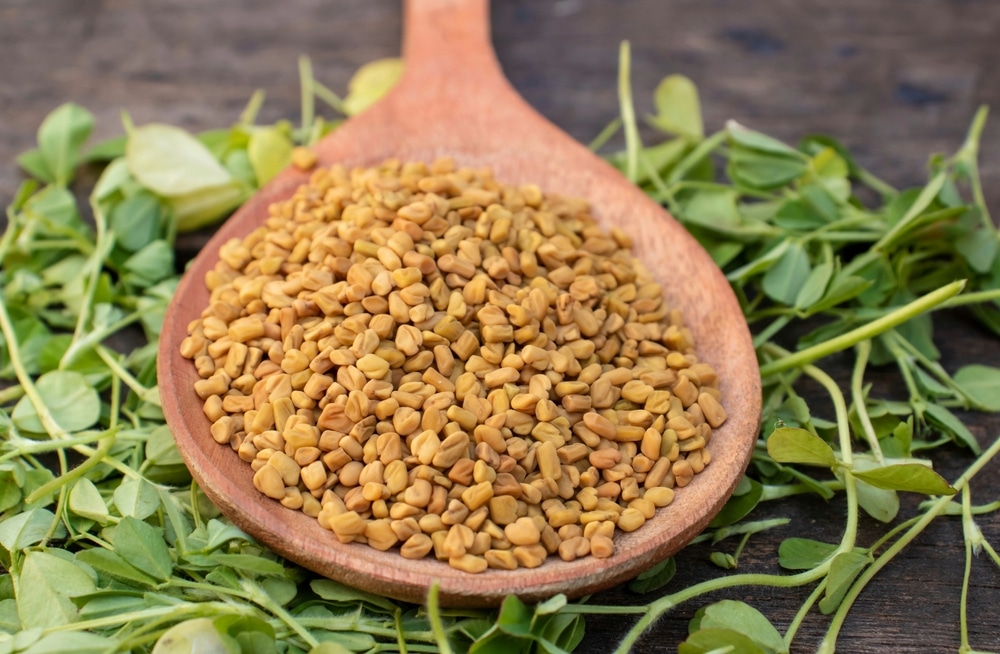Table of Contents
Are you, by any chance, looking to plant some benefits in your very own backyard garden? Let’s look into planting methi seeds right at home! Gardening has its own benefits, especially when you’re doing kitchen gardening in the backyard of your very place. Not only this, but when you grow fruits and vegetables yourself, its also gives you a sense of ease and relief as well. Hence, gardening can be a lot of fun when it comes to all you plantation lovers out there. Now, sometimes, you are in need of a certain spice or an herb and for that you have to rush towards the market to get it. But here’s a food for thought; why don’t you grow your very own herbs inside your garden? Sounds like a pretty cool idea. Let us first learn a bit about this herb which we call methi AKA fenugreek in other words.
Why Plant Fenugreek? (Methi)
Imagine you have a garden full of growing medicinal herbs and exotic plants; that would just be amazing! Gardeners would be wise to plant fenugreek, also known as methi, because of its many advantages and ease of growth. This adaptable herb needs good drainage to prevent root rot and grows well in full sun and partial shade. Large-seeded (Trigonella foenum-graecum) or small-seeded (Trigonella glabra) fenugreek seeds have anti-inflammatory and enhanced digestive properties. The seeds can help nursing moms for milk production, and the fresh leaves provide foods with a distinct flavor. Because fenugreek fixes nitrogen, it also enhances poor soil. You can benefit from its culinary and medicinal properties with little maintenance. Let us get some insights into how we can actually plant methi seeds right at home.
DO YOU KNOW? Clover-like fenugreek or methi (Trigonella foenum-graecum) is an herb. Its seeds are utilized in food and medicine and have a flavor akin to maple syrup. Asia, Europe, and the Mediterranean region are home to fenugreek. Fenugreek appears to increase insulin and decrease the stomach’s absorption of sugar.

Selecting Fenugreek Seeds for Planting
Select fenugreek seeds of the highest quality by making sure they are;
1. Equal in Size and Color
Consistent Stems encourage uniform growth for planting methi seeds.
2. Free from Cracks or Damage
Steer clear of seeds with flaws.
3. Acquired from a Reputable Vendor
Source seeds from reliable sources for optimal outcomes.
Set these things in order of importance for a good planting.
How to Plant Methi Seeds
Before you grow methi seeds, first you need to make sure of the soil and its pH levels.
Sow Seeds
- Evenly distribute the fenugreek seeds on the ready-made soil.
- As an alternative, plant with 6 inches separating each row.
Cover Seeds
- Apply a thin layer of soil, about 1/4 inch deep, over the seeds.
- Make sure not to bury the seeds too far down.
Water Gently
- Gently yet thoroughly water the soil.
- For best germination, maintain a healthy seed-to-soil contact ratio. Click on the link above to learn how you can actually grow fenugreek inside a container.

Ideal Growing Conditions for Fenugreek Plants
Although fenugreek plants are adaptable to a variety of growth environments, they favor;
Full Sun or Partial Shade
Fenugreek is a versatile plant that can tolerate full and partial shade. It may be grown in various garden conditions.
Temperature
Warm soil, ideally between 60°F and 75°F, is optimal for fenugreek seed germination.
Good Drainage
To avoid root rot, ensure the planting area has adequate drainage. The best options are raised beds or pots with drainage holes.

Benefits of Growing Fenugreek
Fenugreek has many advantages in addition to being simple to grow.
- Fixes Nitrogen: As a nitrogen-fixing plant, fenugreek helps improve soil quality by transforming atmospheric nitrogen into a form that plants can utilize.
- Shallow Roots: Due to its shallow root structure, fenugreek is a good choice for container gardening or tiny garden areas.
- Herbal Medicine: Fenugreek has long been utilized for its therapeutic qualities, which include enhancing digestion and controlling blood sugar levels.
Troubleshooting and Common Problems
Fenugreek is a simple plant to produce. However, there are a few potential problems;
- Root Rot: In locations with high rainfall, ensure adequate drainage to avoid root rot when planting methi seeds.
- Poor Soil: While fenugreek can grow in poor soil, it will develop more quickly if organic matter is added.
- Pests: Neem oil can cure fungi like powdery mildew and control pests like aphids. The same kind od rules apply when you are planting clover as well.

Final Thoughts
Summing up, one of the easiest ways to grow methi is to plant seeds, which need minor work to yield fresh leaves and seeds. Select high-quality fenugreek seeds and sow them in well-drained soil in full or partial shade for best results. Fenugreek fixes nitrogen in the soil and grows best in areas with good drainage and a shallow root structure. Watch out for problems such as root rot, and apply neem oil as necessary.
In conclusion, your methi seedlings will thrive properly, yielding a solid, therapeutic herb ready for harvest. Fenugreek adds flavor and health benefits to your house and is ideal for any size garden.
Sow some methi seeds now and reap a million benefits later!
